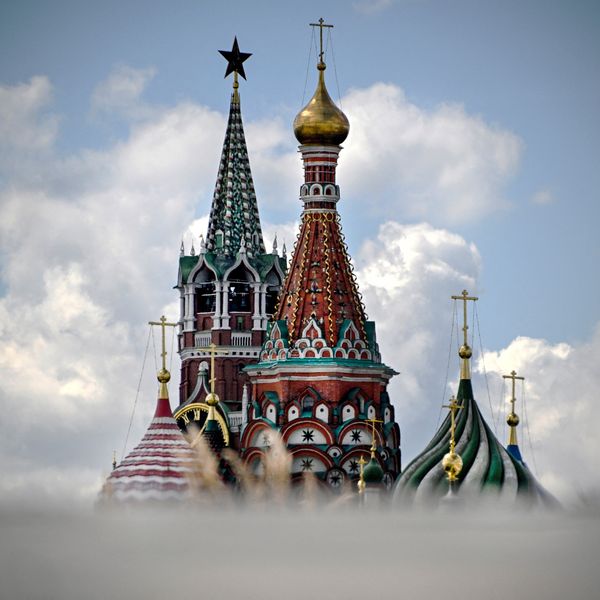Bottom Line Up Front
- Upcoming Russian-Iranian naval drills put Moscow clearly on the side of Tehran in the crisis unfolding between the United States and Iran.
- The Trump administration’s policy of 'maximum pressure’ will continue to drive Iran closer to U.S. adversaries and critics, particularly Russia.
- The emerging Iranian-Russian alliance is driven in part by their shared interests in preserving the Assad regime in Syria and combatting Sunni jihadist groups.
- Moscow hopes Tehran will consummate a major purchase of Russian weaponry when the U.N. ban on Iranian arms imports expires in October 2020.
On September 2, Russia’s state-run media quoted Iranian Foreign Minister Mohammad Javad Zarif as saying, following a meeting with counterpart Sergei Lavrov, that Iran had welcomed a Russian proposal to secure the Persian Gulf and that Russia and Iran planned to hold joint naval drills in the Indian Ocean. The announcement came five days after U.S. Secretary of Defense Mark Esper stated at a Pentagon press briefing that a U.S.-led coalition operation to secure commercial shipping in the Gulf was 'up and running.’ To date, that U.S.-led operation has been joined by the United Kingdom, Australia, and the host of U.S. naval command headquarters for the Gulf, Bahrain, with some intelligence support to be provided by Israel. On September 3, press reports indicated Russia might also make oil shipment routes to Turkey and Syria available to Iran, notably because these routes would not be vulnerable to U.S. sanctions.
The announcements indicate that Russia intends to use its increasingly close relationship with Iran to break the four-decade U.S. monopoly on Gulf security arrangements. On its own, Iran lacks the capability to challenge Washington, but backing from Russia could enable Tehran to pose a significant threat to the United States. A Russian-Iranian alliance in the Gulf would build on their successful joint campaign to help Syrian President Bashar Al Assad defeat the armed rebellion that has challenged his regime since 2011. With its intervention in Syria, Russia has been able to prop up its ally while also reestablishing itself as a key actor in the region, following a long hiatus after the 1991 collapse of the Soviet Union. For Iran, the intervention in Syria has demonstrated Iran’s ability to project power in the region and rendered Iranian and Iran-backed forces increasingly able to pose a direct threat to Israel. The joint Russia-Iran actions in Syria are also based on their common identification of Sunni jihadist groups such as Al Qaeda and the so-called Islamic State as primary threats. Both Russia and Iran have echoed Assad’s identification of all of his mostly Sunni armed opposition as 'terrorist groups.’ The United States, by contrast, identifies Iran and the Shia Muslim groups it backs, such as Lebanese Hezbollah, as a threat at least as great as that posed by Sunni jihadists.
By agreeing to joint naval drills with Iran and possibly also new oil export routes, Russia is emphasizing its strong opposition to the Trump administration’s policy of 'maximum pressure’ on Iran. As have the European countries and China, who are also parties to the 2015 multilateral Iran nuclear agreement, Russia opposed the Trump administration’s abrogation of that accord and its imposition of all U.S. secondary sanctions. In May 2019, the Trump administration ended a sanctions waiver that was used by Russian nuclear firms to help Iran remain under the nuclear agreement’s prescribed limits on the size of Iran’s stockpile of low enriched uranium. Russian firms build and supply nuclear fuel for Iran’s Bushehr civilian nuclear power plant, which the Trump administration has not, for now, decided to sanction. The Trump administration policy has also prevented Russia from expanding its civilian trade with Iran, and the purported Russian offer of the use of its ports for Iranian oil exports to Turkey and Syria might represent an effort by the Kremlin to help Iran directly challenge U.S. sanctions.
It is not only Russian nuclear companies that earn substantial funds from work in Iran. Russia is a crucial supplier of military equipment to Iran, and Russia's defense manufacturers depend, to some extent, on revenues earned from Iran. Those revenues are currently modest, consisting of repair contracts on Russian-made equipment such as MiG-29 combat aircraft, T-72 tanks, and Kilo-class submarines Iran bought in the early 1990s. Iran has not rearmed since then, and U.N. Security Council Resolution 2231, which enshrined the nuclear deal, bans Iran from importing major combat systems until October 2020. The Russian-made S-300 air defense system, which was delivered to Iran in 2017, was exempt from that restriction because it is a purely defensive system. In mid-2016, then-Defense Minister Hossein Dehgan visited Moscow reportedly to discuss a major new arms deal from Russia when that ban expires. Russia seeks to ensure that Iran can earn sufficient funds to be able to move forward with the purchases at that time.











